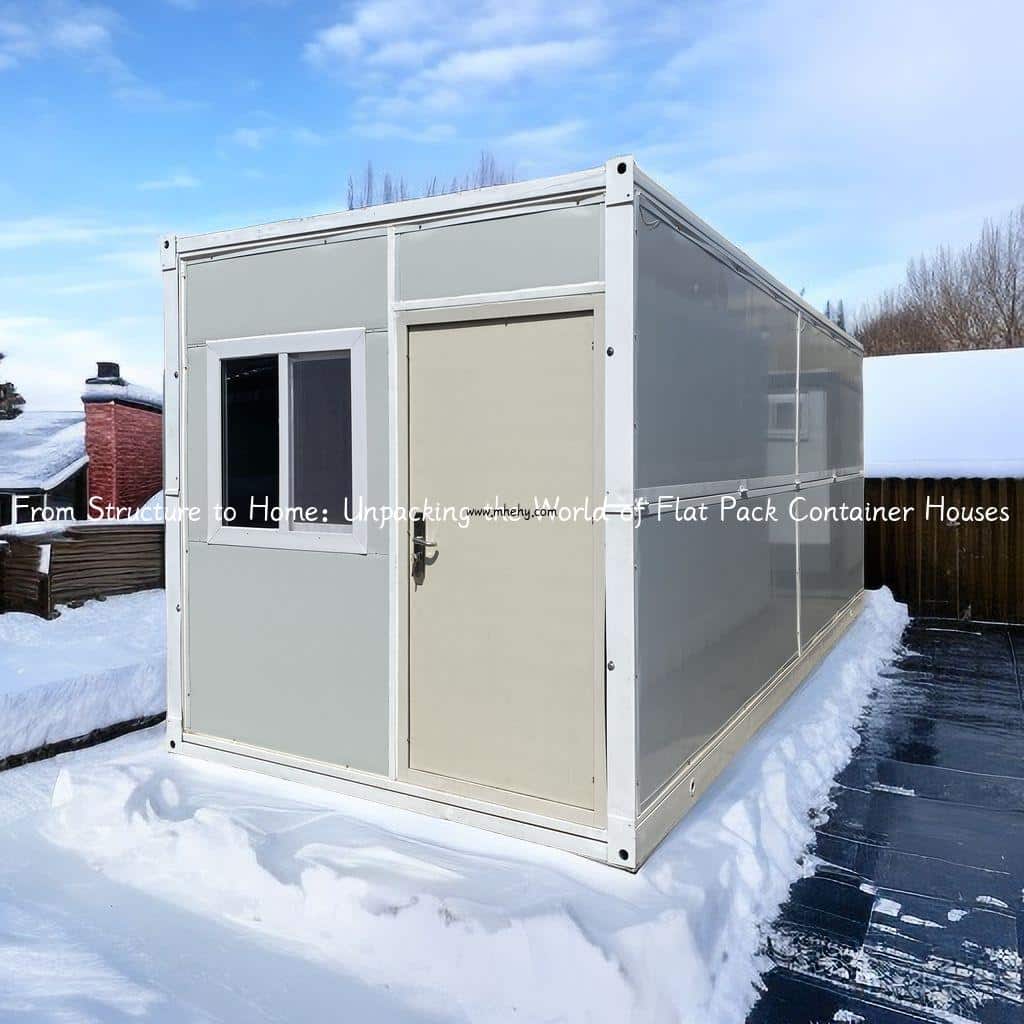From Structure to Home: Unpacking the World of Flat Pack Container Houses


From Structure to Home: Unpacking the World of Flat Pack Container Houses
In recent years, the concept of flat pack container houses has been gaining traction as an alternative solution to traditional home construction. These modular structures offer a contemporary and sustainable approach to building homes, with the added benefit of being easily transported and assembled.
So, what exactly are flat pack container houses? Essentially, they are pre-fabricated modular units constructed from steel shipping containers. These containers, typically manufactured for transporting goods across the globe, are repurposed and transformed into functional living spaces. The containers’ robust steel structure serves as the foundation, providing a durable and secure base for the house.
One of the key advantages of flat pack container houses is their mobility. Traditional home construction often involves complex and time-consuming processes, requiring extensive labor and resources. This is where flat pack container houses come in handy, as they can be disassembled and transported to different locations effortlessly. This makes them ideal for individuals who desire flexibility in their living arrangements, such as frequent travelers or temporary housing solutions.
While flat pack container houses may seem basic at first glance, they offer a surprising degree of versatility and customization. These modular units can be easily modified and combined to create larger living spaces, meeting the diverse needs of homeowners. From single-container studio apartments to multi-level structures, the possibilities are endless.
Moreover, the interior customization options are virtually limitless. Thanks to the neutral and minimalist nature of container modules, homeowners can create their dream living spaces without much hassle. Walls can be easily added or removed, allowing for various room configurations. With the right planning and design, these container houses can boast modern kitchens, spacious living areas, and well-appointed bathrooms.
In addition to their adaptability, flat pack container houses are also eco-friendly. By utilizing recycled shipping containers, this form of construction prevents material waste and contributes to reducing the carbon footprint. Furthermore, the use of containers reduces the need for new building materials, which are often sourced unsustainably. As our society continues to prioritize environmental conservation, the rise of flat pack container houses has become a testament to sustainable living.
Despite their many advantages, it is important to note that flat pack container houses do have some limitations. It is crucial to ensure proper insulation, ventilation, and climate control within these structures. Without adequate installation of these essential components, container houses may be susceptible to extreme temperatures or humidity. However, with the right planning and design, these challenges can be easily overcome.
Flat pack container houses have emerged as an innovative and affordable housing solution for a wide range of individuals. Whether it is a permanent residence, a vacation home, or even an office space, these modular structures offer convenience, flexibility, and sustainability. As our world continues to shift towards a more sustainable future, the flat pack container house industry is poised to play a significant role in shaping the way we think about and construct our living spaces.













